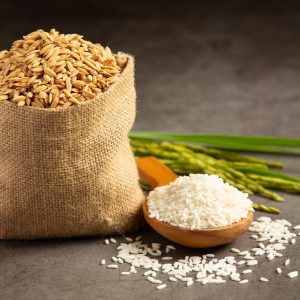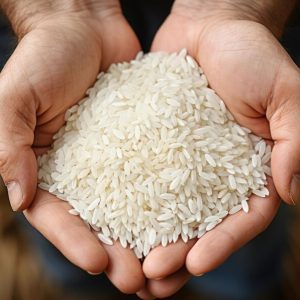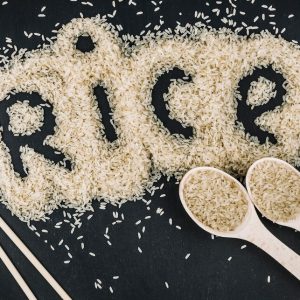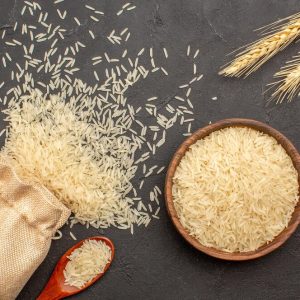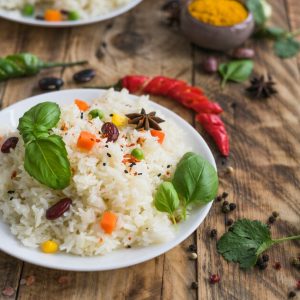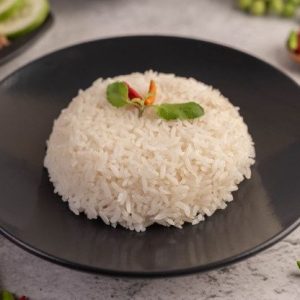The perfect rice for your Kitchen It can be the widest question one can ask for. Rice is a staple food for millions around the world. It plays a key role in many cuisines, from Asian dishes to Latin specialties. Choosing the right type of rice can make a big difference in your cooking. It can turn a simple meal into something special. But do you know the main differences between long-grain and short-grain rice? These differences help you pick the best rice based on flavor, texture, and the dish you’re making. Learning this helps both home cooks and professional chefs create perfect meals every time.
What Is Long-Grain Rice? Characteristics and Common Types
Long-grain rice is known for its tall, slender grains. Each grain is about three times longer than it is wide, giving it a stretched appearance. When cooked, long-grain rice tends to stay separate with a fluffy texture. Popular varieties include Basmati, Jasmine, and American long-grain rice. These types often come with a subtle aroma and a mild flavor. They are great for dishes where you want the rice to stay light and fluffy, such as pilafs or rice salads.
Nutritionally, long-grain rice can be either polished or whole grain. Whole grain varieties include more fiber, making them healthier options. Long-grain rice is versatile and works well in many dishes. It’s especially favored in cuisines that value lightweight, individual grains. Its ability to hold its shape during cooking makes it a top choice for stir-fries, casseroles, and side dishes.
What Is Short-Grain Rice? Characteristics and Common Types
Short-grain rice looks almost round—its width is nearly equal to its length. These grains are plump, giving the rice a stubbier appearance. Varieties like Arborio, Japanese Sushi rice, and Valencia are classic examples. Short-grain rice is famous for its sticky and creamy texture, which melts in your mouth. That stickiness helps it hold together well, a key feature in sushi and rice puddings.
Short-grain rice is often polished but can also be found in whole grain form. Its high starch content makes it perfect for recipes where you want the rice to cling together. Its moist, tender quality is essential for dishes like risotto, where the rice needs to absorb flavors and create a rich, velvety feel. This rice type excels in recipes that require the rice to hold shape and add body to the dish.
Cooking Techniques and Texture Differences
Cooking Methods for Long-Grain Rice
Cooking long-grain rice usually involves boiling, absorption, or pilaf methods. For fluffy results, rinsing the rice before cooking is a good idea. Rinsing removes surface starch that could make the rice sticky. When cooked properly, long-grain rice stays separate, light, and airy. Adding a pinch of salt and using the right water-to-rice ratio helps improve the texture. It’s ideal for dishes where you want each grain to shine, like fried rice or salads.
Cooking Techniques for Short-Grain Rice
Short-grain rice is best cooked using steaming or rice cooker methods. Its water ratio is usually higher—around 1¼ cups water for every cup of rice—to achieve that soft, sticky quality. Covering the rice tightly helps steam it perfectly. This rice’s moist texture makes it perfect for sushi or risotto. Its stickiness means it easily molds into shapes, making it perfect for sushi rolls and rice balls.
Key Texture and Consistency Variations
Long-grain rice remains firm and separate after cooking. It’s dry enough to stay fluffy and not clump together. Short-grain rice, on the other hand, becomes soft, moist, and sticky. This difference is key in choosing the right rice. For example, sushi rice needs that sticky, cohesive texture, while pilafs benefit from fluffy grains that don’t clump.
Expert cooks say the length and starch content mainly determine these behaviors. Cook time also impacts texture—longer cooking can make short-grain rice softer, while overcooking long-grain rice can cause it to become mushy. Understanding these factors helps you get the perfect result.
Culinary Uses and Dishes Best Suited for Each Rice Type
Dishes Ideal for Long-Grain Rice
Long-grain rice works well in dishes where you want individual grains with a light bite. Think of recipes like pilafs, fried rice, or rice salads. These dishes benefit from the fluffy, separated grains that stay distinct. Chefs often prefer long-grain rice for its versatility and clean flavor profile. It’s also great as a side for grilled meats or vegetables.
Dishes Ideal for Short-Grain Rice
Short-grain rice is the star in dishes that need a stickier, creamier texture. Sushi rolls, risottos, rice puddings, and sticky rice desserts all rely on short-grain varieties. The cohesiveness of this rice helps it hold its shape, which is essential for sushi or rice balls. Its richness adds a smooth, velvety mouthfeel that’s hard to beat in comfort foods.
Nutritional and Health Considerations
The nutritional differences between long- and short-grain rice mainly depend on whether they’re polished or whole grain. Brown rice, whether long or short, offers more fiber, vitamins, and minerals than white rice. The glycemic index (GI) can vary too—white long-grain rice tends to have a higher GI, meaning it raises blood sugar faster. For a healthier choice, opt for whole grain varieties whenever possible.
If you’re watching your carbs or calories, check the packaging. Nutrition info varies based on processing and type. A balanced diet can include both types, depending on what dishes you love.
Selecting the Right Rice for Your Kitchen
When choosing between long-grain and short-grain rice, think about the cuisine and dish. Want fluffy rice for a pilaf? Long-grain is your best bet. Making sushi or risotto? Short-grain rice is the way to go. Storing rice properly in a cool, dry place keeps it fresh longer. Budget also matters—long-grain rice tends to be more affordable and easier to find.
For meal planning, keep it simple: pick long-grain rice for everyday dishes and short-grain for special recipes requiring sticky or creamy textures. Experimenting with both broadens your cooking skills and allows you to create new flavors and textures.
Conclusion
Understanding the key differences between long-grain and short-grain rice helps you make smarter choices in the kitchen. Long-grain rice shines in recipes that require fluffiness and separation. Short-grain rice excels in dishes that need a soft, sticky, or creamy texture. The right rice can elevate your meals and bring out the best in your favorite recipes.
Don’t be afraid to try both types—each offers unique qualities that can enhance your cooking. The next time you shop, consider what dish you want to prepare and pick the rice that matches. Your taste buds will thank you.
